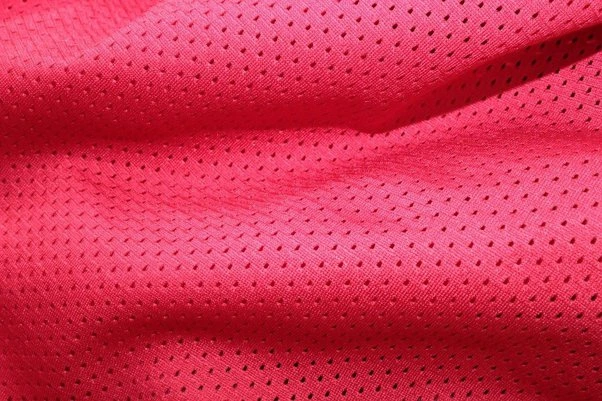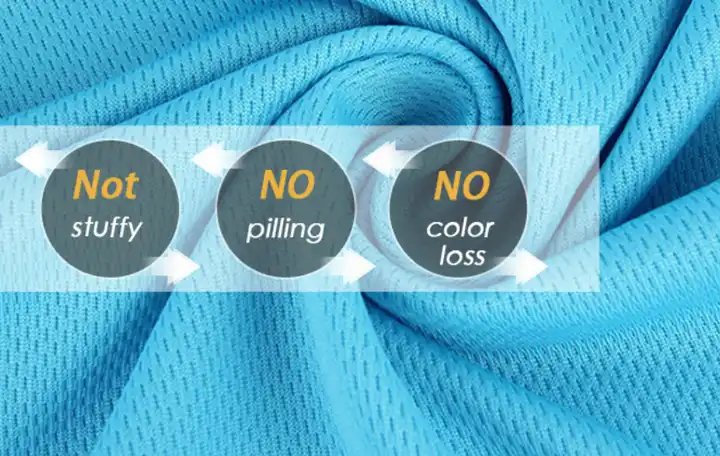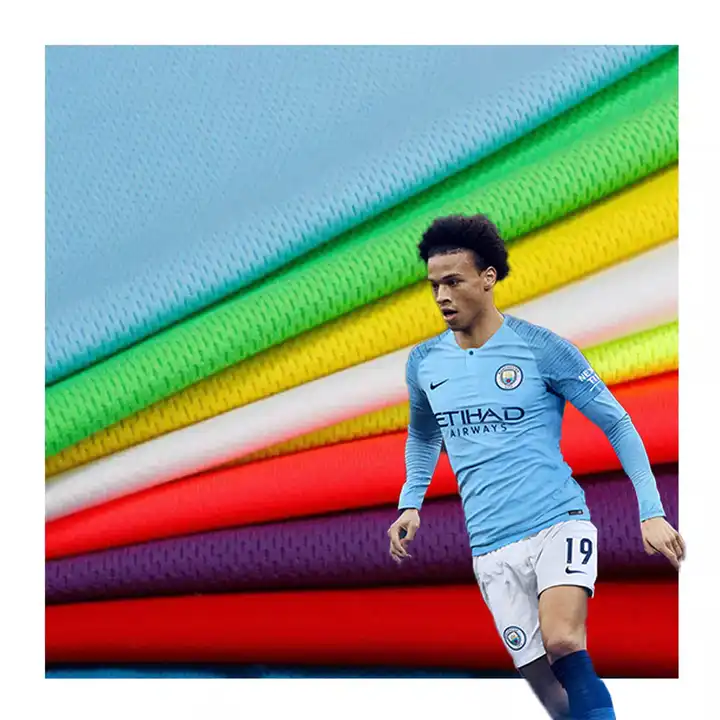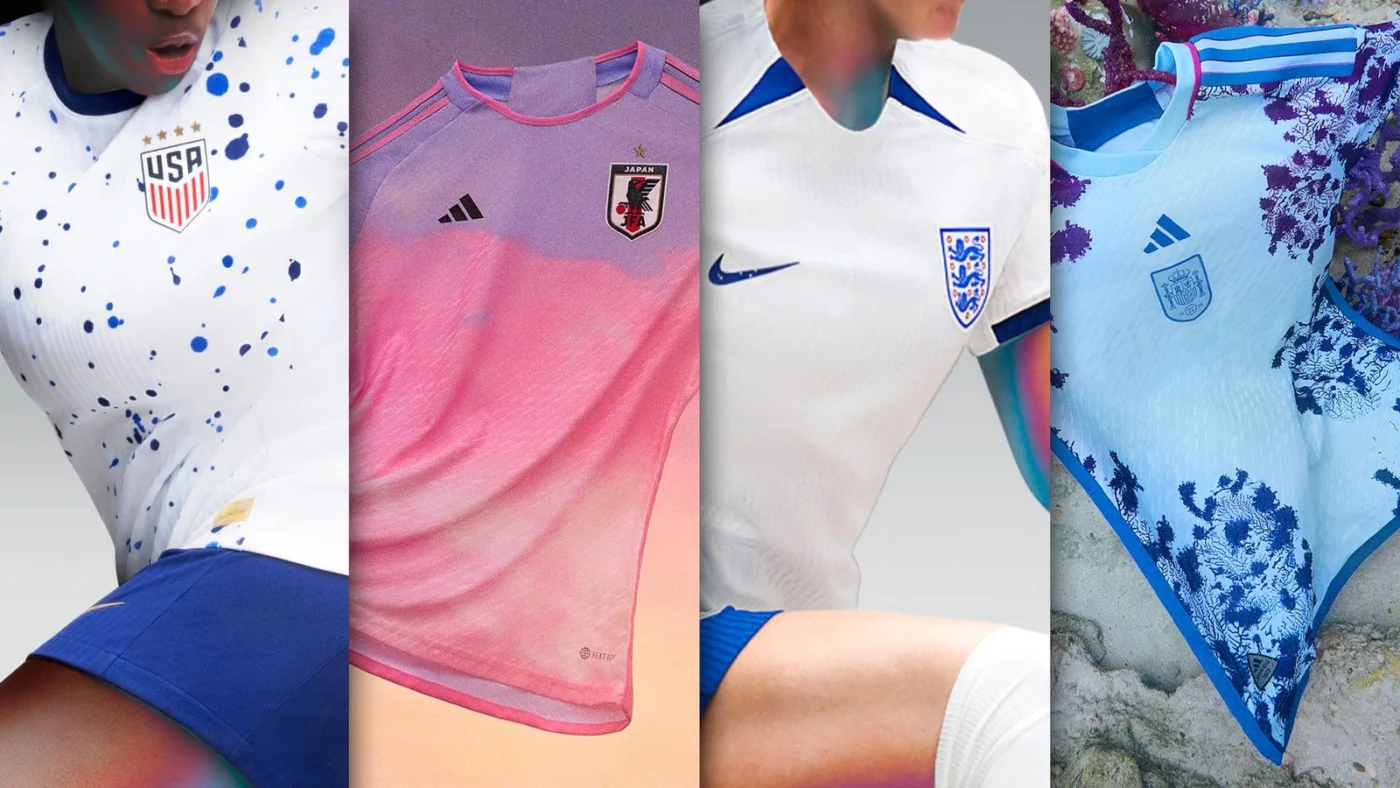Are you a die-hard football fan who can’t resist donning your favorite team’s shirt every game day? Or are you simply curious about the fabric that gives those iconic football shirts their distinctive look and feel? Whether you’re a passionate supporter or just an inquisitive mind, we’ve got you covered! In this blog post, we’ll dive into the fascinating world of football shirt materials – from traditional cotton blends to advanced synthetic fabrics.
History of football shirt materials
The history of football shirt materials is a fascinating journey that has evolved alongside the game itself. From simple cotton to high-tech synthetic fabrics, the materials used in football shirts have undergone significant changes over the years.
In the early days of football, players wore heavy and uncomfortable woolen jerseys. These were not only cumbersome but also prone to shrinking and losing shape after being washed. However, at that time, there were limited options for fabric materials, so wool was widely used.
As the game grew in popularity and professionalism increased, it became clear that a more durable and lightweight material was needed for football shirts. In the 1920s, cotton became a popular choice due to its breathability and ability to absorb sweat. However, cotton was still susceptible to shrinking and fading after multiple washes.
In the 1940s and 1950s, synthetic fibers such as acrylic and nylon started being incorporated into football shirt designs. These materials were much stronger than cotton and could retain their shape even after being subjected to intense physical activity on the field. They also offered better moisture-wicking properties, keeping players cool and dry during games.
By the 1970s, polyester had become the dominant material for football shirts. Its combination of durability, flexibility, and quick-drying properties made it an ideal choice for professional teams around the world. It also provided ample space for team logos and sponsor names to be printed onto shirts.
As technology continued to advance in the late 20th century, new synthetic fabrics such as spandex and elastane were introduced. These materials added an element of stretch and elasticity to football shirts, allowing for a better fit and more freedom of movement on the field.
Today’s common materials for football shirts
Today, football shirts are made from a variety of materials that have been specially designed to meet the demands of the sport. In this section, we will take a closer look at some of the most common materials used in modern-day football shirts.
1. Polyester
Polyester is by far the most popular material used in football shirts today. It is durable, lightweight, and has excellent moisture-wicking properties, making it perfect for high-intensity physical activity like playing soccer. The fabric also holds color well and can be printed on easily, making it ideal for team logos and designs.
2. Nylon
Nylon is another synthetic material commonly used in football shirts. Like polyester, it is lightweight and breathable, but it also offers better stretch and flexibility than polyester. This makes it an ideal choice for players who require maximum mobility on the field.
3. Cotton
While not as common as polyester or nylon, cotton is still a popular choice for football shirts due to its softness and comfort. However, cotton does not offer the same level of performance as synthetic materials as it absorbs sweat rather than wicking it away from the body.
4. Mesh
Many modern-day football shirts incorporate mesh panels into their design to enhance breathability and ventilation. Mesh allows air to circulate freely through the garment while still providing coverage and protection for players.
5. Spandex/Lycra
These two stretchy fabrics are often blended with other materials in football shirt construction to provide additional flexibility and support during intense physical activity.
Polyester
Polyester is one of the most commonly used materials in football shirt production. It is a synthetic fabric that is known for its durability, versatility, and affordability. Polyester has become a popular choice among manufacturers and teams due to its ability to withstand intense physical activities and harsh weather conditions.
One of the main reasons why polyester is preferred for football shirts is its durability. This material is highly resistant to stretching, shrinking, and wrinkling, making it perfect for an active sport like football. Players need garments that can withstand constant movement and contact with other players on the field, and polyester offers just that. It also maintains its shape even after multiple washes, ensuring that the shirt retains its original fit throughout the season.
In addition to being durable, polyester fabric also has moisture-wicking properties. Football players are often exposed to sweat during games or training sessions, which can make them uncomfortable and affect their performance. However, polyester absorbs moisture from the skin and quickly evaporates it into the air, keeping players dry and comfortable. This feature makes it an ideal choice for sports where athletes engage in high-intensity activities.
Another advantage of using polyester in football shirts is its lightweight nature. Unlike natural fabrics like cotton or wool, polyester weighs much less while still providing excellent durability and strength. This lightweight property ensures that players do not feel weighed down by their jerseys during games or practices.
Furthermore, polyester has excellent color retention capabilities. Football teams often have specific colors associated with their logo or brand identity, and it’s essential to maintain the color consistency of their shirts. Polyester is highly resistant to fading, allowing teams to wear their jerseys for an extended period without worrying about the colors losing their vibrancy.
Dri-FIT
Dri-FIT is a high-performance, moisture-wicking fabric that has become increasingly popular in the production of football shirts. Developed by sportswear giant Nike, Dri-FIT technology was first introduced in 1991 and has since revolutionized the athletic apparel industry.
The name “Dri-FIT” itself is derived from the fabric’s ability to wick away sweat and moisture from the skin, keeping athletes cool and dry during intense physical activity. This innovative fabric is made from a blend of synthetic microfiber materials such as polyester or nylon, which are specially designed to pull sweat away from the body and onto the surface of the fabric where it can evaporate quickly.
One of the key features of Dri-FIT material is its unique construction that allows for superior breathability. The fabric consists of tiny microfibers with larger surface areas compared to traditional fabrics. This enables moisture to be spread out over a larger area, increasing its rate of evaporation and providing a cooling effect on the wearer’s skin.
In addition to its exceptional sweat-wicking capabilities, Dri-FIT also offers excellent durability and comfort. The use of synthetic fibers makes it resistant to wear and tear while maintaining a lightweight feel. This helps athletes stay comfortable throughout games or training sessions without feeling weighed down by heavy, wet clothing.
Another advantage of using Dri-FIT material in football shirts is its ability to regulate temperature effectively. During hot weather conditions, it prevents overheating by allowing air to circulate through the fabric. In colder weather, it acts as an insulating layer, keeping the body warm.
Dri-FIT technology has become a staple in the production of football shirts for both professional and amateur players. It is also widely used in other sports and athletic apparel, making it one of the most popular and trusted performance fabrics in the market today.
Elastane/Spandex
Elastane, also known by its brand name Spandex, is a synthetic fiber that has become widely used in the production of football shirts. This material has gained popularity due to its unique properties that make it an ideal choice for sportswear.
1. Composition and Characteristics
Elastane is made from a long-chain polymer called polyurethane, which is produced through a chemical process. The resulting fabric is highly elastic, with the ability to stretch up to 500% of its original length without breaking or losing shape. This is one of the key features that make elastane a popular choice for athletic wear as it allows for greater flexibility and range of motion during physical activities.
In addition to its elasticity, elastane also offers excellent recovery capabilities. Even after being stretched, this material can quickly return to its original shape and size once tension is released. This makes it an ideal choice for football shirts as it can withstand the constant stretching and movement on the field without losing its shape or becoming baggy.
2. Breathability and Moisture-wicking
Apart from being stretchy and durable, Elastane/Spandex also offers other functional benefits that make it suitable for football shirts. One such benefit is its breathability. The fabric’s structure allows air circulation, making it easier for sweat to evaporate quickly and keep the wearer cool and comfortable during intense physical activity.
Moreover, this material has moisture-wicking properties that draw sweat away from the skin towards the outer surface of the fabric where it can evaporate. This helps to keep the wearer dry and prevents the build-up of bacteria and odors.
3. Fit and Comfort
Elastane/Spandex is also known for its ability to conform to the body’s shape, providing a snug fit that is essential for athletic wear. This not only enhances the overall appearance of football shirts but also allows for better mobility and performance on the field. The fabric’s stretchiness also means that it can accommodate a wide range of body sizes and shapes, making it a versatile choice for sportswear.
In terms of comfort, elastane offers a smooth and soft feel against the skin, reducing irritation and chafing during physical activity. Its lightweight nature also adds to the overall comfort of football shirts, making them suitable for prolonged wear.
In summary, Elastane/Spandex is an ideal material for football shirts due to its elasticity, durability, breathability, moisture-wicking properties, fit, and comfort. It is commonly used in combination with other fabrics such as polyester or nylon to create high-performance sportswear that can withstand the rigors of intense athletic activities.
Comparison between different materials
Football shirts are an essential part of the game, not only representing a team’s identity but also providing players with comfort and functionality during matches. The material used to make these shirts plays a crucial role in their overall performance and durability. In this section, we will compare different materials commonly used to make football shirts based on three important factors – durability, breathability, and comfort.
1. Durability
When it comes to durability, the longevity of a football shirt depends on various factors such as quality of materials, frequency of use and proper care. However, some materials are inherently more durable than others.
Polyester is the most common material used for making football shirts due to its excellent strength and resistance to wear and tear. It can withstand repeated washings without losing its shape or color, making it ideal for intense gameplay. Additionally, polyester is also resistant to wrinkles and shrinking, ensuring that the shirt maintains its original fit even after multiple washes.
Another material known for its durability is nylon. This synthetic fabric is highly durable and abrasion-resistant, making it perfect for rough tackles and sliding on the field. It is also quick-drying and moisture-wicking, making it suitable for all weather conditions.
2. Breathability
Football matches can be physically demanding with players running around the field under scorching heat or in cold temperatures. Therefore, it’s crucial for football shirts to have good breathability properties to keep players cool and comfortable throughout the game.
Cotton is a natural fabric that is widely known for its breathability. It allows air to flow through the fabric, keeping the body cool and dry. However, cotton shirts are not commonly used for football matches as they tend to absorb sweat and become heavy, making it uncomfortable for players.
Polyester and nylon, on the other hand, have better breathability properties than cotton. They are moisture-wicking fabrics that pull sweat away from the skin and allow it to evaporate quickly, keeping the player’s body cool and dry. These materials are also lightweight, making them ideal for intense gameplay.
3. Comfort
Comfort is a crucial factor when it comes to football shirts as players need to feel comfortable in their kit to perform at their best on the field.
Cotton is known for its softness and comfort against the skin. However, as mentioned earlier, it is not commonly used for football shirts due to its poor moisture-wicking abilities.
Polyester and nylon are lightweight materials that provide a comfortable fit without weighing down players during the game. Additionally, these materials have stretchable properties that allow freedom of movement on the field.
In conclusion, polyester and nylon are the preferred materials for making football shirts due to their durability, breathability, and comfort properties. While cotton may be more comfortable against the skin, it is not as practical for intense gameplay. It’s essential to consider these factors when choosing a football shirt to ensure maximum performance and comfort on the field.
Performance needs
Performance needs are a crucial aspect to consider when it comes to football shirts. These garments need to be durable, comfortable and lightweight in order to meet the demands of professional players and avid fans alike.
One of the key performance requirements of football shirts is durability. Football is a physically demanding sport that puts a lot of strain on clothing, especially during intense matches or training sessions. This is why football shirts are typically made from strong, resilient materials that can withstand frequent washing and wear without losing their shape or color.
Another important factor in performance needs for football shirts is comfort. Players spend long hours wearing these jerseys, running, jumping, and sweating on the field, so it’s essential that they feel comfortable and unrestricted in their movements. The material used must allow for proper ventilation and moisture-wicking properties to keep players cool and dry throughout the game.
In recent years, there has been a shift towards using more sustainable materials in the production of football shirts. Eco-friendly fabrics such as recycled polyester have become increasingly popular due to their ability to meet both performance needs and sustainability goals. These materials not only offer high-quality performance but also reduce waste and carbon footprint in the production process.
Lightweight fabric is also an essential requirement for football shirts. A heavy or bulky jersey can weigh down players and impact their agility on the field. Therefore, most manufacturers use lightweight synthetic fabrics such as polyester or nylon blends to achieve both durability and lightness.
Moreover, modern technology has allowed for additional features to be incorporated into football shirt designs, such as UV protection and anti-bacterial treatments. These features provide extra benefits for players, such as protection from harmful sun rays and minimizing bacteria growth that can cause unpleasant odors.
In conclusion, performance needs are a crucial consideration in the design and production of football shirts. From durability to comfort, sustainability, and additional features, these garments must meet high standards in order to enhance players’ performance on the field.
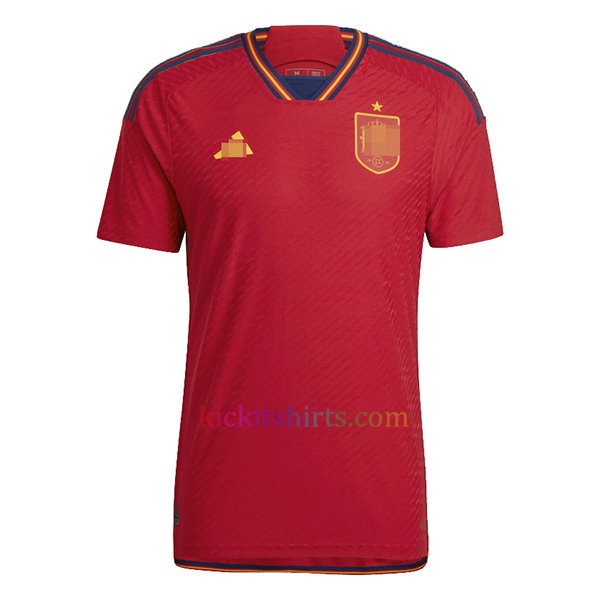
Spain Home Shirt 2022 Stadium Edition
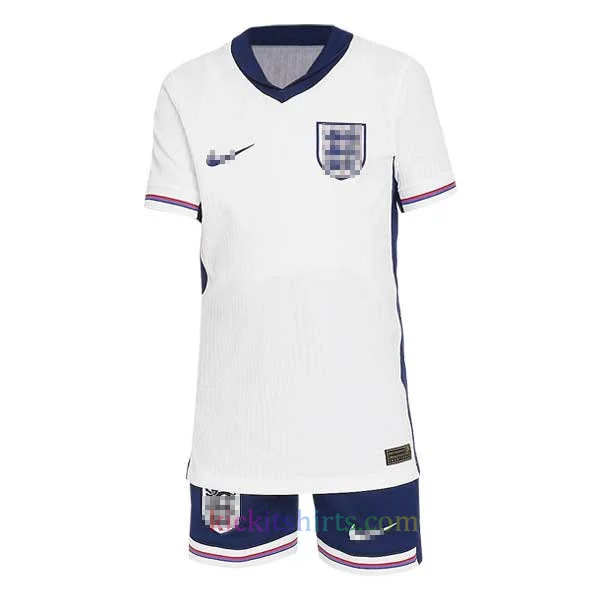
England Home Kit Kids 2024
FAQs
1. What fabric do footballers wear?
Footballers typically wear shirts made of lightweight and breathable fabrics such as polyester and mesh. These fabrics are designed to wick away sweat and moisture, keeping the players cool and comfortable during intense matches. Many football clubs also have their own custom-made jerseys with advanced performance materials that provide a perfect fit and allow for maximum mobility on the field.
2. Which fabric is best for football?
The best fabric for football shirts is one that is lightweight, breathable, and moisture-wicking. This will keep players cool and dry during intense games. Some popular options include polyester blends, mesh, and performance fabrics like Dri-FIT or Climalite. It’s also important to consider the durability of the fabric as football involves a lot of physical contact and wear and tear on the shirts.



